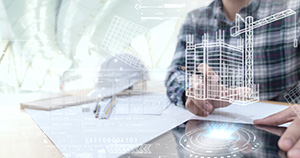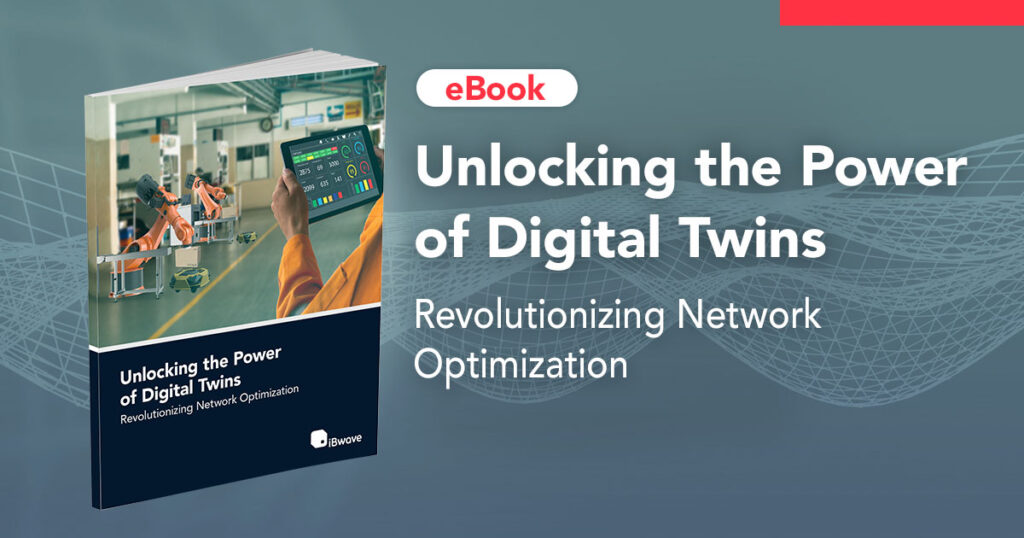Connecting the Future with Digital Twins
Share

In the era of digital transformation, the concept of digital twins has emerged as a groundbreaking technology that promises to reshape industries and enhance connectivity. iBwave’s new eBook “Unlocking the Power of Digital Twins” explores this technology, shedding light on its potential and applications.
Understanding Digital Twins
Digital twins are virtual replicas of physical objects, systems, or processes. These replicas are highly accurate and encompass a wide range of attributes, including geometry, behavior, and real-time data.
In network design and optimization, digital twins are virtual replicas of your network, building or campus that allow you to optimize network performance and plan for future innovation.
Digital twins act as a bridge between the physical and digital worlds, allowing for real-time monitoring, analysis, and optimization of various aspects of your network’s performance.

Digital twins can be used to assess the impact of new technologies and services on the network, identify potential issues before they occur, and test out various network configurations. By utilizing digital twins, network operators can optimize their networks for maximum performance, and ensure that their networks are able to effectively handle new services and technologies. Digital twins are becoming increasingly important in network design and optimization, and are allowing network operators to stay ahead of the curve in terms of network management and optimization.
Applications Across Industries
There are diverse applications of digital twins across various industries. From manufacturing and healthcare to telecommunications and smart cities, digital twins offer a transformative approach to problem-solving and decision-making. Manufacturers can optimize production processes, predict maintenance needs, and reduce downtime by creating digital twins of their equipment and network designs.
In the telecommunications industry, digital twins enable network operators to proactively identify and address network performance issues, and even predict future network needs and requirements. And, in smart cities, digital twins can be used to model and simulate the behavior of energy, water, and transportation systems, enabling cities to become more efficient, safe, and sustainable.
Telecommunications and Connectivity
Digital twins are already having a significant impact on the telecommunications sector. With the advent of 5G and the growing complexity of network infrastructure, digital twins offer a way to design, deploy, and manage networks more efficiently. By creating virtual replicas of cellular networks, operators can optimize coverage, predict potential issues, and ensure seamless connectivity.
Challenges and Solutions
While there is significant potential for using digital twins in your network designs and optimization, there can be challenges associated with their implementation. Creating accurate and dynamic digital twins requires reliable data, advanced modeling techniques, and seamless integration with existing systems. By fostering collaboration between network engineers and building plans you can ensure more accurate data in your virtual replica.
Additionally, security must also be taken into account when utilizing digital twins. All data used to create the digital replica must be encrypted and secure. By ensuring that the data is secure, it will help protect against malicious actors from accessing sensitive network information. With the right security measures in place, digital twins can be a powerful tool in network design and optimization.
Looking Ahead
As technology continues to evolve, digital twins are poised to become even more sophisticated and integral to various domains. The integration of artificial intelligence, machine learning, and data analytics will amplify the capabilities of digital twins, enabling more accurate predictions and faster problem resolution.
This will open up more possibilities for digital twins to be used in various applications, creating even more efficient networks and optimized solutions. Digital twin technology is evolving rapidly, and organizations should embrace it to remain competitive. With the right team and planning, digital twins can help achieve better understanding and control of complex systems.
Conclusion
In a world driven by data and connectivity, digital twins stand as a transformative force with the potential to reshape industries and revolutionize decision-making. The eBook “Unlocking the Power of Digital Twins” by iBwave offers a comprehensive exploration of this technology’s capabilities, applications, and challenges. From manufacturing to telecommunications, digital twins are paving the way for a more efficient, connected, and innovative future.
Read and download the full eBook: Unlocking the Power of Digital Twins.

- Transforming Wireless Network Management with Digital Twins - April 2, 2025
- Top 3 Trends Shaping Network Design in 2025 - January 17, 2025
- Streamlining Network Design with GPU-Accelerated Predictions - May 21, 2024




















